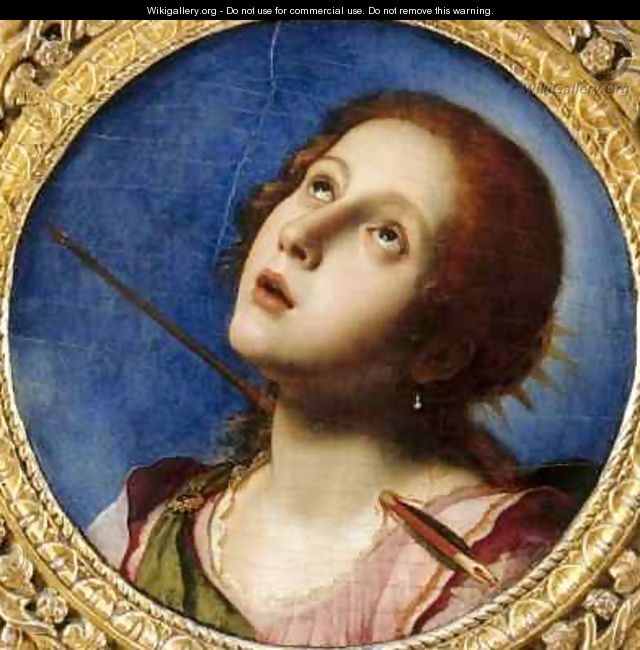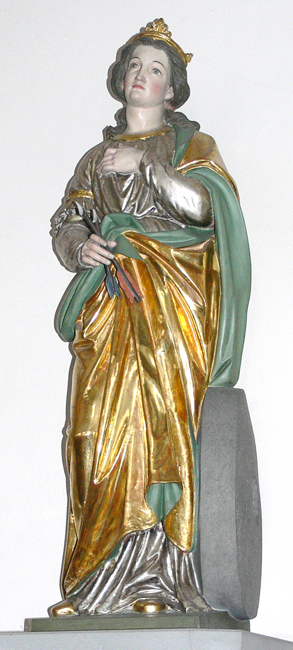Christina’s father, Urbanus, was a wealthy pagan who had a number of golden idols. When Christina converted to Christianity, she distributed the idols among the poor and the needy. Furious, her father imprisoned and tortured her. Being thrown in a pit of snakes, shot with arrows, burned, and thrown into a lake with a millstone around her neck were just some of the fates she is said to have suffered.
But because angels protected her, she survived and even outlived her father, who suffered at the hands of God for his part in her torment (a clear parallel with the story of Saint Barbara). Eventually, at the age of 13 or 14, Christina died as a result of beheading at the hands of a judge that succeeded Urbanus around 300 A.D.

Altarpiece Of Saint Christina, Carlo Dolci, c. 1650 – 1655, Oil on panel, Kedleston Hall, Derby. WikiCommons.
Dolci presents a head and shoulders depiction of Christina with an arrow piercing her neck in a Quattrocentro-style circular frame. Dolci was an Italian Baroque painter who was known for his portrayal and repetition of religious images, as well as her preference for painting solitary figures. The sweetness and melancholy on Christina’s face as she looks pleadingly and longingly up to the heavens are also typical of Dolci’s works.

Christina von Bolsena, Moriz Schlachter (sculptor), c.1889, Ravensburg source Andreas Praefcke (photographer), 2006, WikiCommons.
In this sculpture, Christina is depicted with the millstone she was tied to in her father’s attempt to drown her. This is common motif throughout artistic representation of her. She also holds a quiver of arrows, another symbol often associated with the tortures she endured.
This statue was sculpted by Moriz Schlachter, a German woodcarver and church decorator. His studio was dedicated solely to Christian art, often equipping churches with statues. This statue of St. Christina quickly made Schlachter known nationwide, leading to his creation of many altars and other Christian sculptures in Austria.
